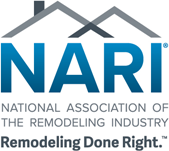
Recently, we have discussed the basics of wet rooms — how they differ from standard bathrooms, why they’re trending, and why you should consider getting one for your home. DreamMaker Bath & Kitchen of West Collin County takes a further look at the design considerations that go into building wet rooms and how they drive the costs reflected in a bathroom estimate.
The Basics
First, a quick recap. A wet room is a room designed for bathing consisting only of a shower and/or a tub, unlike a full bathroom. While it’s functionally the same as a shower enclosure, a wet room does not have a curbed or raised entrance and is essentially a “tanked” room — that is, it’s a waterproofed room that may have tiles to the ceiling.
Design Considerations
Designing a wet room requires factors not found in typical bathrooms. For example, a curbless entrance is an accessibility design element. Work with a remodeler with experience in bathroom and accessibility remodeling. The following are some design considerations that will ultimately drive the specifications and cost reflected on the bathroom quote.
- Materials. The expectation with wet rooms is that everything in it will be constantly exposed to moisture, so you have to choose materials that won’t easily rot or deteriorate. While tile is the go-to material for bathrooms, various materials can be used in a wet room. If you must use wood, make sure it’s kiln-dried and waterproofed.
- Lighting. A wet room may be smaller than a standard bathroom, but don’t skimp on the lighting. It should strike a good combination of fixtures that provide task lighting, and ambiance. Lightbulbs and fixtures should be able to withstand heat and humidity. Natural lighting is also a key element that must not be overlooked — whether you choose windows or glass blocks, they should be part of your wet room lighting scheme.
- Ventilation. Proper ventilation helps reduce condensation in a bathroom, which, in turn, can help prevent mold and mildew growth. An extraction fan can provide ventilation if the wet room does not have windows.
- Flooring. In bathrooms, particularly in wet rooms, safety is an important design consideration because of the higher risk of slipping. Fortunately, there is a wide selection of slip-resistant flooring materials. Tiles remain the most popular flooring material for bathrooms, and are available in slip-resistant options. Mosaics and textured stones are also great options thanks to their inherent slip-resistance. Some materials, like stone, can be sandblasted to make them less slippery.
Let’s Start a Conversation!
Are you looking for a “bathroom remodeler near me“? DreamMaker Bath & Kitchen of West Collin County offers a wide range of professional remodeling services, including kitchen, bath, and shower remodeling. Get started with a no-obligation consultation by calling us at (469) 663-4900, or contact us online! We serve Plano, Allen, McKinney, Fairview, Frisco, Richardson, Murphy, Wylie, Prosper, Celina, and Carrollton.




